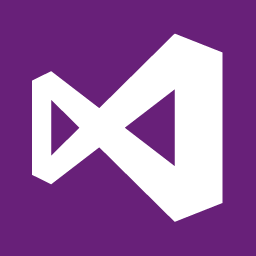The AI Arms Race: AWS and Microsoft Battle for Developer Dominance
October 31, 2024, 4:03 am

Location: United States, California, San Francisco
Employees: 1001-5000
Founded date: 2008
Total raised: $350M
In the fast-paced world of technology, the race for developer supremacy is heating up. Amazon Web Services (AWS) and Microsoft are locked in a fierce competition, each vying to capture the hearts and minds of software developers. The stakes are high, and the tools they offer are evolving rapidly.
AWS recently launched its Amazon Q Developer AI coding assistant, a tool designed to streamline the coding process. This assistant integrates directly into popular Integrated Development Environments (IDEs) like Visual Studio Code and JetBrains. Developers can highlight code and summon a range of actions, from optimizing code to generating tests. It’s like having a virtual assistant at your fingertips, ready to tackle coding tasks with just a few clicks.
Powered by Anthropic’s Claude 3.5 Sonnet model, Q Developer aims to enhance productivity. It reduces the need for developers to switch between chat and code windows, allowing them to maintain focus. This is crucial in a world where distractions can derail even the most seasoned coder. The tool is available for free, with a Pro tier offering expanded capabilities for a monthly fee.
Originally known as Amazon CodeWhisperer, Q Developer has evolved significantly. It started as a simple code suggestion tool but has grown into a comprehensive assistant that can chat, debug, and document code. This evolution reflects Amazon’s commitment to improving developer tools, making coding less of a chore and more of a creative endeavor.
But AWS is not alone in this race. Microsoft has also made significant strides with its GitHub Copilot. Recently, it expanded Copilot’s capabilities, introducing multi-model support. This allows developers to choose from various AI models, including Anthropic’s Claude and OpenAI’s GPT series. The flexibility is a game-changer, providing developers with options tailored to their specific needs.
Microsoft’s GitHub Copilot for Azure is designed to integrate seamlessly into the developer’s workflow. It acts as an AI-powered assistant, helping manage cloud resources and troubleshoot issues without leaving the coding environment. This integration is vital, as it eliminates the cognitive burden of switching between tools, a task that can cost developers precious time and focus.
The rise of the “AI engineer” is another significant trend. As AI becomes integral to software development, new roles are emerging. Developers are no longer just coders; they are now tasked with integrating intelligence into applications. This shift requires a new skill set, one that encompasses model evaluation and prompt engineering.
Microsoft’s tools are designed to support this transition. With AI App Templates that can be deployed in minutes, the company is making it easier for developers to experiment and innovate. This democratization of AI tools could empower smaller teams and individual developers, leveling the playing field in a competitive landscape.
The implications of these advancements are profound. As enterprises rush to adopt AI capabilities, the tools they choose today will shape their development processes for years to come. Microsoft’s integration of GitHub Copilot with Azure gives it a significant edge in the cloud wars. With a vast majority of Fortune 500 companies already using Azure, Microsoft is well-positioned to capture the growing demand for AI-driven development.
However, this competition is not just about tools; it’s about the future of software development itself. As AI assistants become more capable, the line between human and machine contributions will blur. This raises questions about authorship, liability, and intellectual property. Developers will need to navigate this new landscape carefully, balancing the benefits of AI with the ethical implications of its use.
Both AWS and Microsoft are committed to reshaping the developer experience. AWS’s Q Developer focuses on refining the in-editor experience, while Microsoft’s Copilot aims for a flexible, model-agnostic approach. The competition is fierce, and both companies are pushing the boundaries of what’s possible in software development.
As these tools roll out, developers have a wealth of options to explore. The future of coding is not just about writing lines of code; it’s about leveraging AI to enhance creativity and productivity. The message is clear: the era of AI-assisted development is here, and it’s transforming how software is built.
In this rapidly evolving landscape, developers must adapt. The tools they choose will not only impact their immediate work but also shape the future of the industry. As AWS and Microsoft continue to innovate, the question remains: who will emerge as the leader in this AI arms race? The answer may define the next generation of software development.
In conclusion, the battle between AWS and Microsoft is more than a clash of tools; it’s a pivotal moment in the evolution of technology. Developers stand at the forefront of this change, armed with powerful AI tools that promise to redefine their craft. The future is bright, but it’s also filled with challenges. As the competition heats up, one thing is certain: the landscape of software development will never be the same.
AWS recently launched its Amazon Q Developer AI coding assistant, a tool designed to streamline the coding process. This assistant integrates directly into popular Integrated Development Environments (IDEs) like Visual Studio Code and JetBrains. Developers can highlight code and summon a range of actions, from optimizing code to generating tests. It’s like having a virtual assistant at your fingertips, ready to tackle coding tasks with just a few clicks.
Powered by Anthropic’s Claude 3.5 Sonnet model, Q Developer aims to enhance productivity. It reduces the need for developers to switch between chat and code windows, allowing them to maintain focus. This is crucial in a world where distractions can derail even the most seasoned coder. The tool is available for free, with a Pro tier offering expanded capabilities for a monthly fee.
Originally known as Amazon CodeWhisperer, Q Developer has evolved significantly. It started as a simple code suggestion tool but has grown into a comprehensive assistant that can chat, debug, and document code. This evolution reflects Amazon’s commitment to improving developer tools, making coding less of a chore and more of a creative endeavor.
But AWS is not alone in this race. Microsoft has also made significant strides with its GitHub Copilot. Recently, it expanded Copilot’s capabilities, introducing multi-model support. This allows developers to choose from various AI models, including Anthropic’s Claude and OpenAI’s GPT series. The flexibility is a game-changer, providing developers with options tailored to their specific needs.
Microsoft’s GitHub Copilot for Azure is designed to integrate seamlessly into the developer’s workflow. It acts as an AI-powered assistant, helping manage cloud resources and troubleshoot issues without leaving the coding environment. This integration is vital, as it eliminates the cognitive burden of switching between tools, a task that can cost developers precious time and focus.
The rise of the “AI engineer” is another significant trend. As AI becomes integral to software development, new roles are emerging. Developers are no longer just coders; they are now tasked with integrating intelligence into applications. This shift requires a new skill set, one that encompasses model evaluation and prompt engineering.
Microsoft’s tools are designed to support this transition. With AI App Templates that can be deployed in minutes, the company is making it easier for developers to experiment and innovate. This democratization of AI tools could empower smaller teams and individual developers, leveling the playing field in a competitive landscape.
The implications of these advancements are profound. As enterprises rush to adopt AI capabilities, the tools they choose today will shape their development processes for years to come. Microsoft’s integration of GitHub Copilot with Azure gives it a significant edge in the cloud wars. With a vast majority of Fortune 500 companies already using Azure, Microsoft is well-positioned to capture the growing demand for AI-driven development.
However, this competition is not just about tools; it’s about the future of software development itself. As AI assistants become more capable, the line between human and machine contributions will blur. This raises questions about authorship, liability, and intellectual property. Developers will need to navigate this new landscape carefully, balancing the benefits of AI with the ethical implications of its use.
Both AWS and Microsoft are committed to reshaping the developer experience. AWS’s Q Developer focuses on refining the in-editor experience, while Microsoft’s Copilot aims for a flexible, model-agnostic approach. The competition is fierce, and both companies are pushing the boundaries of what’s possible in software development.
As these tools roll out, developers have a wealth of options to explore. The future of coding is not just about writing lines of code; it’s about leveraging AI to enhance creativity and productivity. The message is clear: the era of AI-assisted development is here, and it’s transforming how software is built.
In this rapidly evolving landscape, developers must adapt. The tools they choose will not only impact their immediate work but also shape the future of the industry. As AWS and Microsoft continue to innovate, the question remains: who will emerge as the leader in this AI arms race? The answer may define the next generation of software development.
In conclusion, the battle between AWS and Microsoft is more than a clash of tools; it’s a pivotal moment in the evolution of technology. Developers stand at the forefront of this change, armed with powerful AI tools that promise to redefine their craft. The future is bright, but it’s also filled with challenges. As the competition heats up, one thing is certain: the landscape of software development will never be the same.

